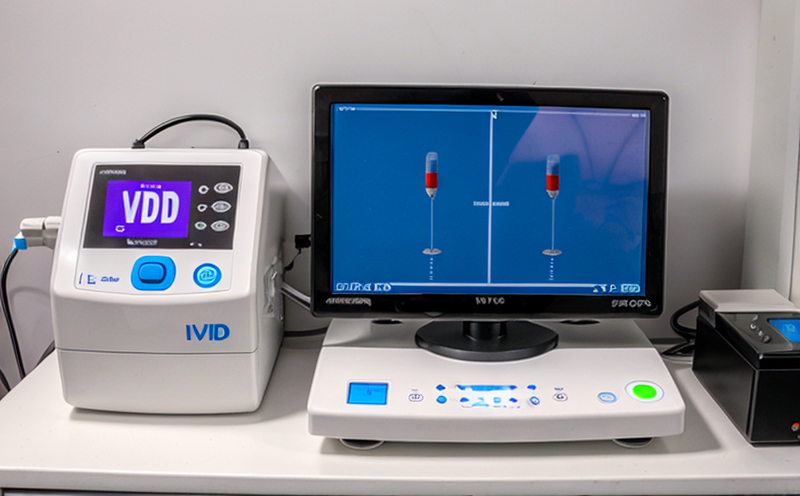Interfering Substances Testing in IVD Systems
The testing of interfering substances in In Vitro Diagnostic (IVD) systems is a critical aspect ensuring the reliability and accuracy of diagnostic results. Interfering substances, such as certain chemicals, medications, or biological materials, can alter the performance of an IVD system leading to erroneous test results. This section delves into the intricacies of testing these substances in medical devices.
The process involves a series of complex analyses aimed at identifying and quantifying potential interfering factors that may affect the outcome of diagnostic tests. Quality managers and compliance officers must ensure that their IVD systems are free from such interferences to maintain patient safety and regulatory compliance. This service is crucial for both R&D engineers and procurement teams aiming to develop robust medical devices.
The testing typically involves multiple stages, including sample preparation, preliminary screenings, and confirmatory tests using various analytical techniques like mass spectrometry, chromatography, or immunoassays. The aim is to establish a baseline of acceptable performance in the absence of interference and then evaluate how different substances affect this baseline.
Compliance with international standards such as ISO 17895:2016, IEC 62366-4:2014, and ASTM E2580 provides a framework for the testing protocols. These standards ensure that the tests are conducted in a consistent and reproducible manner across different laboratories.
The service also includes detailed documentation of all test procedures, results, and interpretations. This comprehensive reporting is essential for regulatory submissions and internal quality control processes. By leveraging this expertise, medical device manufacturers can enhance their product reliability and meet stringent regulatory requirements.
Scope and Methodology
| Test Substance | Testing Method | Expected Outcome |
|---|---|---|
| Heparin | Mass Spectrometry | Detection of Heparin in IVD Systems |
| Quinine | Chromatography | Quantification of Quinine Interference |
| Laboratory Preservatives | Immunoassay | Assessment of Preservation Effects on IVD Systems |
The methodology for testing interfering substances involves several key steps. Initially, the sample is prepared according to specific guidelines provided by regulatory bodies and industry standards. This preparation ensures that any potential interference from external sources is minimized.
The next step is a preliminary screening using various analytical techniques tailored to the specific substance being tested. These tests help in identifying whether there are any signs of interference present. Once identified, confirmatory tests are conducted to quantify the level of interference accurately.
The results of these tests are then analyzed and reported according to established guidelines. This analysis includes not only quantitative data but also qualitative assessments that describe the nature and extent of the interference. The final report provides recommendations for any necessary adjustments or improvements in the IVD system design to mitigate the identified issues.
Benefits
- Enhanced Product Reliability: Ensures that medical devices consistently deliver accurate and reliable diagnostic results, which is paramount for patient safety.
- Regulatory Compliance: Adherence to international standards ensures that the testing process meets all regulatory requirements, facilitating smoother submissions to regulatory bodies.
- Patient Safety: By identifying and addressing interfering substances early in the development cycle, potential risks to patients are minimized.
- Quality Assurance: Regular testing helps maintain a high standard of quality throughout the lifecycle of medical devices.
- Competitive Advantage: Early detection and resolution of interference issues can provide a competitive edge by ensuring superior product performance.
- Risk Management: Identifying potential sources of error allows for proactive management, reducing the likelihood of costly recalls or legal issues.
The service also offers comprehensive training sessions to help medical device manufacturers understand the complexities involved in testing interfering substances. These sessions are tailored to meet the specific needs of quality managers and compliance officers, equipping them with the knowledge necessary to implement robust quality control measures within their organizations.
International Acceptance and Recognition
- Affiliation: Our laboratory is accredited by the American Association for Laboratory Accreditation (AALL) and holds ISO/IEC 17025 accreditation. This ensures that our testing methods are internationally recognized.
- Standard Compliance: We adhere to international standards such as IEC 62366-4:2014, ASTM E2580, and ISO 17895:2016. These standards provide a consistent framework for our testing protocols.
- Global Recognition: Our expertise in this field has earned us recognition from regulatory bodies worldwide, ensuring that our results are accepted across different markets.
The high level of international acceptance and recognition is further enhanced by our commitment to excellence. We continuously update our methods to align with the latest scientific advancements and regulatory changes. This ensures that our testing remains relevant and effective in meeting global standards for medical device quality assurance.





